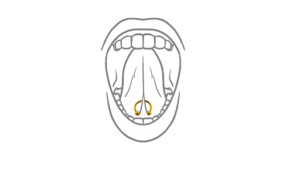 Tongue web piercings, also known as “frenulum piercings,” have a fascinating history rooted in cultural and personal expression. While the exact origins are somewhat unclear, evidence suggests that tongue piercings have been practiced for centuries in various cultures around the world.
Tongue web piercings, also known as “frenulum piercings,” have a fascinating history rooted in cultural and personal expression. While the exact origins are somewhat unclear, evidence suggests that tongue piercings have been practiced for centuries in various cultures around the world.
One of the earliest documented instances of tongue piercings comes from ancient Mayan and Aztec civilizations, where it was performed as part of religious rituals. These piercings were believed to enhance spiritual connection and communicate with the gods. Similarly, in some African and South American tribes, tongue piercings were a symbol of status, strength, and bravery.
where it was performed as part of religious rituals. These piercings were believed to enhance spiritual connection and communicate with the gods. Similarly, in some African and South American tribes, tongue piercings were a symbol of status, strength, and bravery.
 In modern times, tongue web piercings gained popularity in the 1990s and early 2000s within the body modification subculture. As body piercing became more mainstream, individuals sought unique placements for their piercings, leading to the emergence of tongue web piercings as a trendy choice. The tongue web piercing, located underneath the tongue, gained traction for its subtle yet edgy aesthetic. Unlike more visible piercings, such as those on the tongue itself or the lip, the tongue web piercing offered a discreet option for those seeking body modification without drawing too much attention.
In modern times, tongue web piercings gained popularity in the 1990s and early 2000s within the body modification subculture. As body piercing became more mainstream, individuals sought unique placements for their piercings, leading to the emergence of tongue web piercings as a trendy choice. The tongue web piercing, located underneath the tongue, gained traction for its subtle yet edgy aesthetic. Unlike more visible piercings, such as those on the tongue itself or the lip, the tongue web piercing offered a discreet option for those seeking body modification without drawing too much attention.
Today, tongue web piercings remain a popular choice for individuals looking to express themselves through body art. While the cultural and spiritual significance may have evolved over time, the allure of tongue web piercings persists as a form of personal adornment and self-expression. As advocates for safe and responsible body modification, we emphasize the importance of seeking out professional piercers and adhering to proper aftercare practices. So whether you’re a seasoned enthusiast or a curious newcomer, join us at Orbit Skate and Boutique in honoring the rich history and contemporary appeal of tongue web piercings.



